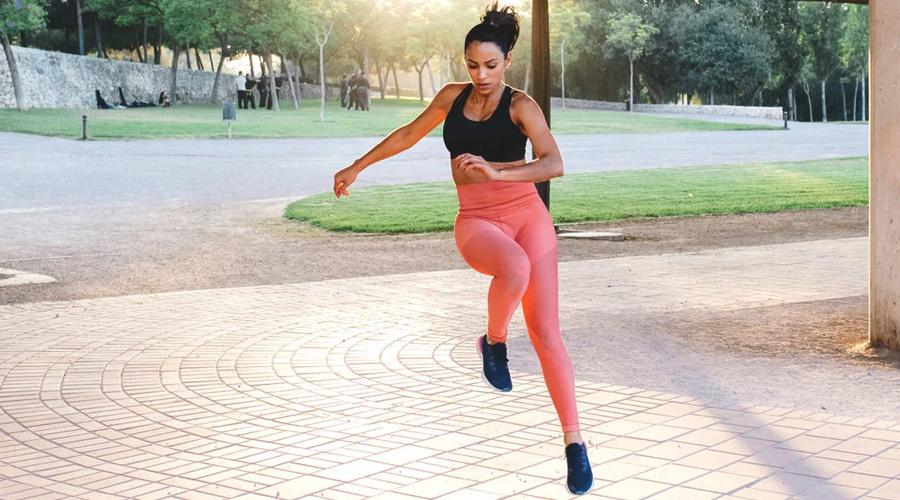Are you spending countless hours in the gym doing endless crunches and sit-ups, but still not seeing the results you want? Are you wondering how many sets of abs per week you should be doing to achieve that coveted six-pack? Look no further, because we have the answers you need.
In this blog post, we’ll be diving deep into the topic of maximizing results through the optimal number of sets of abs per week. We’ll explore the science behind building strong, defined abs and provide actionable tips on how to achieve your fitness goals. Whether you’re a beginner or a seasoned pro, we’ve got you covered with everything you need to know to take your ab game to the next level.
So, if you’re ready to finally see the results you’ve been working so hard for, keep reading. By the end of this post, you’ll have a clear understanding of how many sets of abs per week you should be doing to get the most out of your workouts and achieve the six-pack of your dreams.
Understanding the Science of Building Strong Abs
A strong core is essential for overall health and fitness, and strong abs are a key component of a strong core. But what does it take to build strong, defined abs? To understand the science of building strong abs, we need to take a closer look at the biology behind muscle growth.
Muscles grow through a process called hypertrophy. When you work out, you create microscopic tears in your muscle fibers. As your body repairs these tears, the muscles become stronger and more defined. But it’s not just about doing a lot of reps – you need to work your abs consistently, with proper form and volume, to create the necessary micro-tears that will stimulate muscle growth.
When it comes to abs, there are a few key things to keep in mind. First, your abs are a muscle group just like any other muscle in your body. That means you need to train them with the same level of intensity and consistency as you would any other muscle group. This may mean doing exercises that target your abs directly, as well as exercises that work your core as a whole.

Another important factor to consider is recovery. Just like any other muscle, your abs need time to recover between workouts. If you overwork your abs, they won’t have enough time to repair properly, which can lead to muscle fatigue and injury. It’s also important to fuel your body with the right nutrients to support muscle growth and recovery.
In summary, building strong abs requires a combination of targeted ab exercises, overall core training, proper form and volume, and adequate recovery and nutrition. By understanding the science behind muscle growth, you can work smarter, not harder, to achieve your fitness goals and build a stronger, healthier core.
Read More About Trenbolone Enanthate Dosage
Why Doing More Ab Exercises Isn’t Always Better
If you’re looking to build strong, defined abs, it’s natural to think that doing more ab exercises is the way to go. After all, the more you work your abs, the more they should grow, right? Not necessarily. In fact, doing too many ab exercises can actually be counterproductive. Here’s why.
When you work out, you create microscopic tears in your muscle fibers. This stimulates muscle growth and hypertrophy, which is the process by which muscles get bigger and stronger. However, if you overwork your muscles, they won’t have enough time to recover properly, which can impede progress and even lead to injury.
The same principle applies to your abs. If you do too many ab exercises, you risk overtraining your abs, which can actually hinder progress. Instead of doing endless crunches and sit-ups, focus on quality over quantity. Choose exercises that target your abs effectively and work your core as a whole, such as planks, deadlifts, and squats.
It’s also important to remember that not all ab exercises are created equal. Some exercises are more effective than others for building strong, defined abs. For example, exercises that involve rotation or twisting can be more effective than traditional crunches for engaging the obliques, which are the muscles on the sides of your abs.
In summary, doing more ab exercises isn’t always better. Instead, focus on quality over quantity and choose exercises that target your abs effectively. And don’t forget to give your abs time to recover between workouts – this will allow them to repair and grow stronger over time.

The Importance of Rest and Recovery for Ab Growth
When it comes to building strong, defined abs, many people focus solely on the workout itself – but what happens after the workout is just as important. Rest and recovery play a crucial role in ab growth and overall fitness.
During a workout, you create microscopic tears in your muscle fibers. This stimulates muscle growth and hypertrophy, but it’s during rest and recovery that the real magic happens. When you rest, your body repairs these tears and rebuilds the muscle fibers stronger than before. This is why rest and recovery are just as important as the workout itself.
For abs specifically, it’s important to give them time to recover between workouts. Your abs are a muscle group just like any other, and they need time to repair and rebuild after a workout. Overworking your abs can actually hinder progress and lead to injury. It’s recommended to give your abs at least one day of rest between workouts.
Recovery is also important for overall fitness and well-being. It allows your body to replenish energy stores, repair damaged tissues, and reduce inflammation. This is why it’s important to prioritize sleep, hydration, and proper nutrition in addition to exercise.
In summary, rest and recovery are crucial for ab growth and overall fitness. Give your abs time to recover between workouts, prioritize sleep and hydration, and fuel your body with the right nutrients to support muscle growth and repair. By taking care of your body both during and after workouts, you’ll be able to achieve your fitness goals and build a stronger, healthier body.
Read More About Anadrol 50 Price
How Many Sets of Abs Per Week is Right for You?
When it comes to building strong, defined abs, one common question is how many sets of abs per week is right for you. The answer to this question can vary depending on a number of factors, including your fitness level, goals, and workout routine.
In general, it’s recommended to work your abs at least 2-3 times per week to see results. However, the optimal number of sets will depend on your individual goals and fitness level. For beginners, it may be best to start with 1-2 sets per workout and gradually increase as you build strength and endurance. More advanced lifters may be able to handle 3-4 sets per workout.
It’s important to note that doing more sets isn’t necessarily better. Overtraining your abs can actually impede progress and lead to injury. Instead, focus on quality over quantity and choose exercises that target your abs effectively. This may mean doing a combination of exercises that work your abs directly, as well as exercises that work your core as a whole.
In addition to the number of sets, it’s also important to consider rest and recovery. Your abs, like any other muscle group, need time to recover between workouts. It’s recommended to give your abs at least one day of rest between workouts to allow them to repair and grow stronger.
In summary, the optimal number of sets of abs per week will depend on your individual goals and fitness level. It’s recommended to work your abs at least 2-3 times per week, but avoid overtraining and prioritize rest and recovery. By finding the right balance of volume and recovery, you’ll be able to maximize your results and achieve a stronger, healthier core.
Read More About Trenbolone Enanthate
Finding Your Personal Optimal Ab Training Volume
When it comes to building strong, defined abs, finding your personal optimal ab training volume is key. This will depend on a number of factors, including your fitness level, goals, and workout routine. Here are some tips for finding the right ab training volume for you.
First, it’s important to start with the basics. For beginners, it’s recommended to start with 1-2 sets of ab exercises per workout and gradually increase as you build strength and endurance. More advanced lifters may be able to handle 3-4 sets per workout.
However, it’s important to keep in mind that doing more sets isn’t necessarily better. Overtraining your abs can actually hinder progress and lead to injury. Instead, focus on quality over quantity and choose exercises that target your abs effectively.
One way to find your personal optimal ab training volume is through trial and error. Start with a certain number of sets and see how your body responds. If you’re feeling fatigued or experiencing soreness or pain, it may be a sign that you need to decrease your volume. On the other hand, if you’re not feeling challenged, it may be a sign that you need to increase your volume.
Another approach is to work with a personal trainer or fitness professional who can help you design a personalized workout program tailored to your individual goals and needs. They can help you determine the optimal number of sets of abs per week and adjust your program as needed to help you achieve your goals.
In summary, finding your personal optimal ab training volume will depend on a number of factors. Start with the basics, focus on quality over quantity, and pay attention to your body’s response. With time and patience, you’ll be able to find the right balance of volume and recovery to maximize your results and achieve a stronger, healthier core.

Tips for Maximizing Ab Workouts for Optimal Results
Building strong, defined abs takes time, effort, and dedication. If you’re looking to maximize your ab workouts for optimal results, here are some tips to keep in mind:
- Choose the right exercises: Not all ab exercises are created equal. Some exercises are more effective than others for targeting different areas of your core. Incorporate a variety of exercises into your routine to target your abs from all angles, including planks, crunches, and leg raises.
- Focus on form: Proper form is essential for effective ab workouts. Make sure you’re engaging your abs and not relying on momentum to complete the exercises. Slow, controlled movements are often more effective than quick, jerky movements.
- Increase resistance: To build strong, defined abs, you need to challenge them with resistance. This can be done by adding weights to your exercises, using resistance bands, or incorporating stability balls or other equipment into your routine.
- Vary your routine: Your body adapts quickly to the same routine, so it’s important to switch things up to keep your workouts challenging and effective. Try different exercises, change the order of your routine, or vary the number of sets and reps you do.
- Incorporate cardio: Cardiovascular exercise is important for overall health and can also help you burn fat and reveal your abs. Incorporate cardio into your routine, such as running, cycling, or swimming.
- Prioritize recovery: Rest and recovery are just as important as the workout itself. Allow your abs time to recover between workouts, stay hydrated, and fuel your body with the right nutrients to support muscle growth and repair.
In summary, maximizing ab workouts for optimal results requires a combination of targeted exercises, proper form and resistance, variety, cardio, and recovery. By incorporating these tips into your routine, you’ll be able to achieve a stronger, healthier core and build the defined abs you’ve been working towards.



